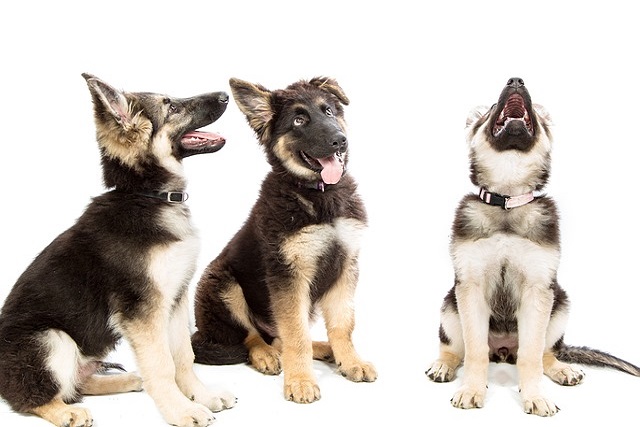
What are the five golden rules of dog training?
Training a dog isn't just about teaching tricks—it's about building trust, communication, and a harmonious life together. But with so much advice out there, it can be hard to know where to start.
The afterglow of the setting sun spills over the tree-lined path. Taking an elderly beloved dog for a walk should be a pleasant time. However, when it suddenly dashes forward like an arrow released from a bow, and the taut leash digs painfully into the palm of your hand, it not only catches you off guard but also harbors numerous hidden dangers. The problem of an older dog pulling on the lead is a common trouble faced by many dog owners. There are complex physiological and psychological factors behind it, and what we need to do is to use professional methods and warm emotions to help them regain the rhythm of walking calmly.
When an older dog dashes forward, we should first explore the reasons from a physiological perspective. As dogs age, their physical functions gradually decline, and joint problems are particularly common. The pain caused by arthritis can make dogs feel uncomfortable when walking, and they may try to relieve this pain by running quickly or dashing forward suddenly. Imagine that when we ourselves are in pain, we will unconsciously want to change our posture or movement, and dogs are no different. In addition, the decline in vision and hearing will also make their perception of the surrounding environment blurred. The familiar streets may seem full of unknowns and threats in the eyes of dogs with blurred vision. Suddenly appearing figures of people, vehicles, or unexpected noises may all become triggers for them to dash forward. Just as we may be panicked at the slightest movement when we are in a dark and unfamiliar environment, dogs will also lack a sense of security due to the degradation of their senses and thus try to escape potential dangers by dashing forward.
 In addition to physiological changes, psychological factors also play a crucial role in the dashing behavior of older dogs. Dogs are emotional creatures. As they enter old age, their emotions become more sensitive and vulnerable. Long periods of solitude and a decrease in interaction time with their owners can make them feel anxious. When they finally wait for the moment to go out for a walk, the pent-up emotions will burst out like a flood, and they will release their inner excitement and unease by dashing forward. Moreover, if they did not receive good leash training when they were young and developed the habit of pulling on the leash casually, as they get older, this bad habit will become more obvious. Even if their bodies are not as flexible as before, they will still instinctively want to break free from the restraint and act according to their own will.
In addition to physiological changes, psychological factors also play a crucial role in the dashing behavior of older dogs. Dogs are emotional creatures. As they enter old age, their emotions become more sensitive and vulnerable. Long periods of solitude and a decrease in interaction time with their owners can make them feel anxious. When they finally wait for the moment to go out for a walk, the pent-up emotions will burst out like a flood, and they will release their inner excitement and unease by dashing forward. Moreover, if they did not receive good leash training when they were young and developed the habit of pulling on the leash casually, as they get older, this bad habit will become more obvious. Even if their bodies are not as flexible as before, they will still instinctively want to break free from the restraint and act according to their own will.
In the face of the problem of an older dog dashing forward, we need to solve it in a scientific and caring way. The first step is to take the dog for a comprehensive physical examination. A professional veterinarian can accurately determine whether the dog has any health problems through a detailed examination. If diseases such as arthritis are diagnosed, it is crucial to follow the doctor's advice for drug treatment and physical rehabilitation. You can prepare a soft dog bed for the dog to reduce joint pressure; take it for moderate swimming exercises. The buoyancy of the water can relieve the joint burden and, at the same time, enhance muscle strength. Only when the physical pain is solved will the dog be more willing to cooperate during the walk.
In terms of leash training, a gentle and step-by-step approach should be adopted. Abandon the traditional method of forcefully pulling the leash, and choose appropriate leash tools, such as a harness, which can evenly distribute the pulling force and avoid causing harm to the dog's neck. When starting the training, before going out each time, let the dog sit quietly by your side first, give it gentle strokes and soft encouragement, and then set off when its emotions are stable. During the walk, once you notice that the dog shows signs of dashing forward, stop immediately, gently call its name, and when it turns back to look at you, give it a snack reward and praise. Through repeated training, let the dog understand that only by walking quietly and slowly can it get the owner's recognition and rewards. This process requires a great deal of patience. Just like teaching a child to walk, every bit of progress is something we should be delighted about.
At the same time, it is equally important to pay attention to the dog's psychological needs. Increase the interaction time with them. Play some simple games with them at home, such as throwing a ball or playing tug-of-war, which can not only enhance the relationship but also consume their excess energy. When walking, slow down and let the dog have enough time to sniff the flowers and plants by the roadside and the scent marks left by other dogs. These seemingly insignificant behaviors are important ways for dogs to understand the world and relieve anxiety. When they feel respected and understood, their inner unease will gradually fade away.
Stopping an older dog from pulling on the lead is a challenging "protracted battle". We not only need to use professional knowledge but also pour in boundless love and patience. Every dog that has entered old age was once a little sun in our lives, accompanying us through countless happy times. Now, their bodies are no longer strong and their eyes are no longer bright, but their dependence on us has never changed. When we hold their leash, it's like holding a heavy responsibility. With warmth and care, we can help them still walk gracefully and calmly in their twilight years and continue to write the beautiful stories between us.

Training a dog isn't just about teaching tricks—it's about building trust, communication, and a harmonious life together. But with so much advice out there, it can be hard to know where to start.

You’ve just welcomed a ball of fur into your home, and as you watch them explore every nook and cranny, a pressing question pops up

Let’s be honest: scrubbing urine out of your apartment carpet at midnight isn’t anyone’s dream. While true accelerated potty training methods can significantly speed up the process,

Let’s be real: that adorable 10-week-old Golden Retriever isn’t plotting to ruin your rugs. But when you’re mopping up your third puddle before noon,

The first few weeks with a new puppy are a whirlwind of wagging tails and chewed-up slippers. Amidst the chaos, teaching your fur baby to lay down on command is like unlocking a secret superpower.

You’ve just returned home after a long day, looking forward to a relaxing evening. Instead, you’re greeted by the unpleasant smell of urine and the sight of a mess on your brand - new rug.